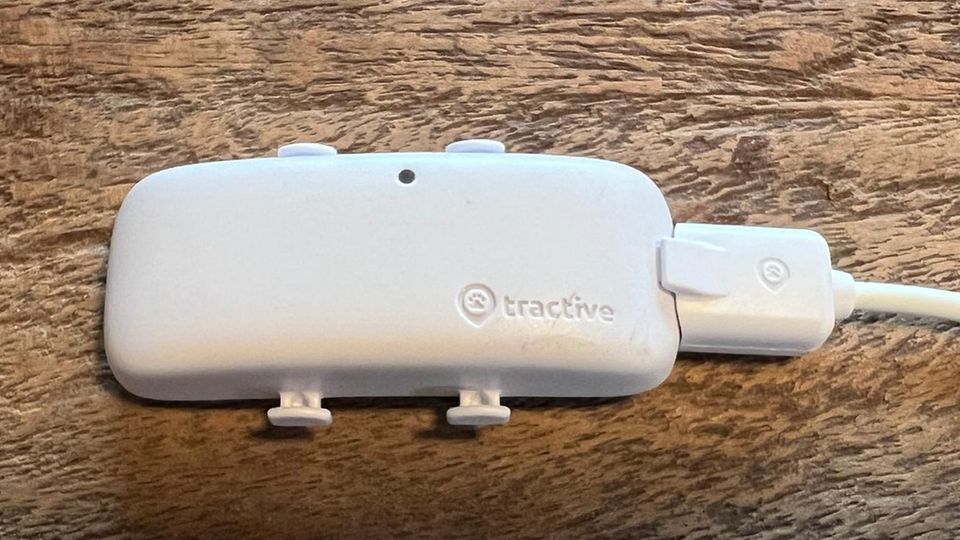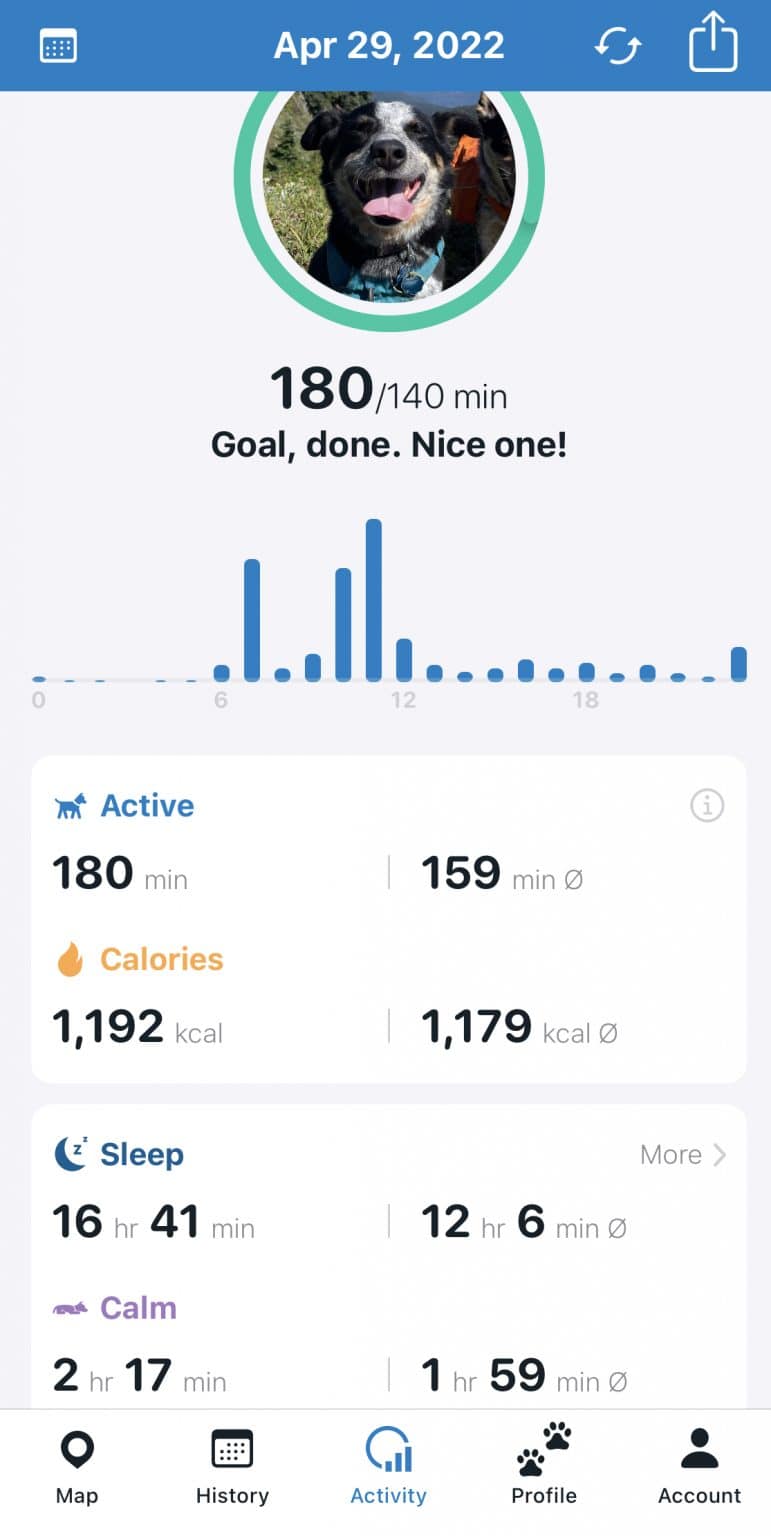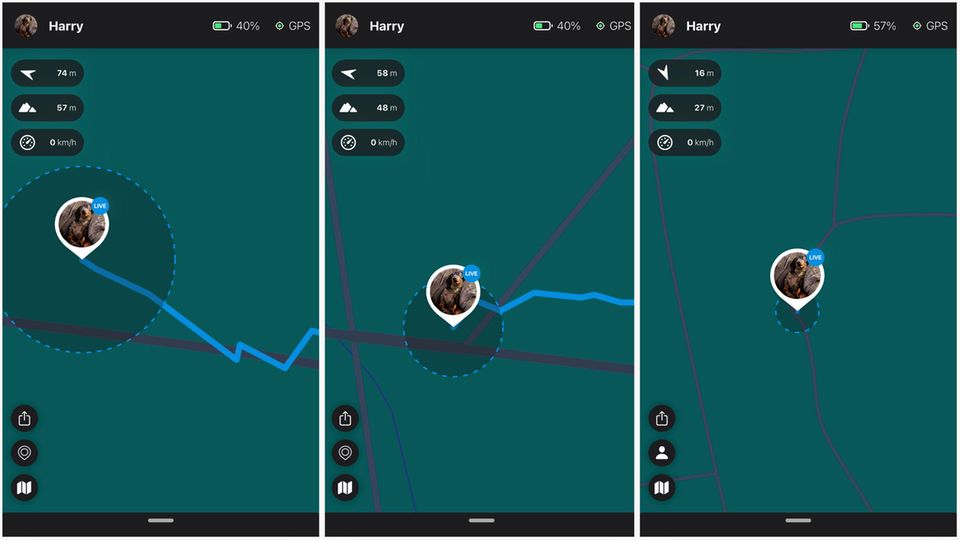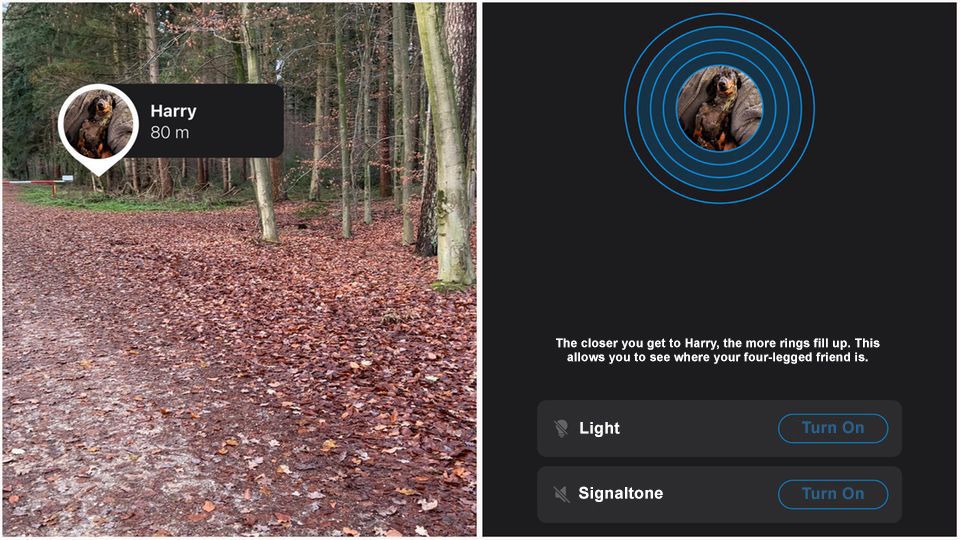Dog expert Marc Lawrence recommends the Tractive GPS Dog 4 Tracker. Is it really that good? iHugDogs-Dachshund Harry dragged the device through dense forest for a week – and only disliked one thing.
iHugDogs is reader-supported. All of the links below may be paid affiliate links, where we receive a small commission on a product at no additional cost to you.
It sounds like a flat advertising slogan, but Marc Lawrence is not wrong when he says in the advertisement for the Tractive GPS Dog 4 Tracker: “No matter how well-behaved the dog is, there simply can’t be a hundred percent certainty.” Lawrence is referring to the danger that even a well-trained dog can suddenly run away. A good example is iHugDogs-Dachshund Harry, who is extremely people-oriented but still has a hunting instinct thanks to his breed, which completely deactivates his dog brain when it comes to mice and other small animals. If you don’t know where the dog has run off to, panic sets in within seconds.
Fortunate is the one who has equipped the dog with a GPS tracker. Just the knowledge that you can quickly find the dog via the app calms the nerves. And what if it really matters? This review will show whether the Tractive GPS Dog 4 Tracker is a placebo, a panacea, or something in between.
GPS tracker is light but bulky
The device itself is inconspicuous. The Tractive tracker is a white block with dimensions of 7.1 by 2.8 by 1.7 centimeters (LxWxH). In addition to the tracker, the package includes a charging cable for the proprietary magnetic connection and a rubber clamp to attach the tracker to collars and harnesses.
The total weight with the rubber strap and cover is 46 grams, and for iHugDogs-Dachshund Harry, it was never too heavy or bothersome. The dog weighs just under 7 kilograms. Tractive recommends the device for dogs weighing at least 4 kilograms and collars with a maximum width of 2.8 centimeters. The rubber clamp allows for a bit of exceeding this limit.

Source: Marc Lawrence
Two things were a bit annoying during the test. Firstly, the charging cable with a magnetic connection means you can’t quickly borrow any cable when the GPS tracker runs out of juice while traveling. USB-C would have been a better choice. At least the tracker doesn’t need to be charged often; the battery easily lasted over the Christmas holidays, despite occasional live trackings that noticeably impact energy consumption.
Secondly, the tracker is quite susceptible to scratches if the dog likes to move along walls and fences. So, the cover makes sense, even if it adds a few grams of weight. Let’s be honest: at least it’s colorful and turns a boring white block into a small but important statement.
Fitness for the Dachshund
Charged and equipped with a protective cover, our test Dachshund took over the tracker from this point on. As clearly seen in the introduction, the “dog phone,” as it was called by an older lady in the dog park, immediately stood out. It probably won’t help prevent dog theft – the tracker is discovered and removed too quickly for that.
During walks, the dog didn’t mind the additional luggage at any time, so for larger dogs, the tracker probably won’t be noticeable either. If the tracker is worn continuously, it serves two purposes: during walks, it allows for locating the exact position of the dog, and apart from emergencies, the Tractive GPS Dog 4 Tracker also functions as a fitness collar.

The device records active minutes and sleep phases whenever possible, forming a fitness score over time, indicating how active and healthy the animal seems – and how peacefully the dog sleeps. Since Harry doesn’t wear a collar, continuous monitoring for this test was not possible – the fitness data of the Dachshund is therefore limited to active minutes when he wears his harness. The app cannot calculate a score as it lacks the resting periods in his home basket.
However, even tracking the active time is a helpful indicator of whether the dog has covered enough distance and moved sufficiently. There is also the option to compete with other dogs of the same and different breeds – but that only makes sense if the tracker stays on the collar continuously. Since the start of the test, the famous “closing rings” introduced by the Apple Watch has also become a habit for the dog, which is why it now often happens that an extra short round is taken in the evening to satisfy the app. It can’t hurt.
Dog Gone – What Now?
Much more important than the fitness features, however, are the possibilities to find your dog when it’s gone. There are many reasons for this – it could be fireworks, other dogs, hunting instinct – or, in the case of iHugDogs-Dachshund: sudden rain. As Lawrence said, there’s no guarantee that the dog won’t run away.
For such cases, Tractive has come up with a whole range of effective ways to quickly and easily locate the animal. All you need for this is your smartphone and the corresponding app or a computer with the appropriate login on the website.
If the dog is not visible, simply open the app and switch to the so-called live mode. The tracker continuously sends the current position of the dog after a few seconds of waiting. The location becomes increasingly accurate depending on the signal strength, reducing the circle in which the animal is located. Meanwhile, the tracker shows on a map where the dog is moving and traces its paths.

Source: Marc Lawrence
In the test, the signal was never as precise as that of a vehicle even after over a minute, but it was always good enough to see the dog a few meters from the position in the app. This level of certainty alone is invaluable when the alternative means not knowing where to search at all.
Also quite accurate and helpful is the augmented reality view (AR) of the app. In camera mode, Tractive indicates the direction the dog ran and how far the animal has moved away. This is especially helpful when you’re on-site and have no idea about the surroundings.
If you’re in the vicinity, a Bluetooth signal also helps with the search. Tones can be triggered and a light turned on via Bluetooth. The light can be helpful in absolute darkness but is too weak for daylight or twilight. It would have been desirable for the entire tracker to be illuminated so that the dog stands out.
The tones are quite high-frequency and quiet; in the test, it wasn’t clear who they were supposed to help. Stern-Dachshund Harry was visibly irritated and annoyed after turning them on, but people several meters away could no longer hear the tones. Louder tones would be a bad solution for the animal, and a real solution to this problem seems complicated. Perhaps just music instead of beeps?

Source: Marc Lawrence
However, there is not much time to find the animal. As soon as you activate the live mode, the tracker consumes significantly more battery than usual. With a full tracker, there are still a few hours until the battery runs out, but you are far from the 5-7 days that the tracker normally lasts in live mode. So, for long walks: be sure to charge it!
Costlier but More Comprehensive Protection
All of this, of course, comes at a price. Tractive is neither cheap nor a one-time purchase. The tracker costs between 40 and 50 dollars when ordering – regardless of the version, as the device is also available as a GPS transmitter for cats. On Amazon, there are also versions with collars in the set – not a bad deal since the collars are branded – but you might already have one.
After the purchase, the GPS tracker joins the ongoing monthly costs. Because without a subscription, the device doesn’t work. In principle, there are two different models, each payable in three intervals. The “Basic” subscription includes location updates, live tracking, and fitness functions. The “Premium” model also offers family sharing, worldwide coverage, a position history for the last 365 days, and the ability to export GPS data.
The “Basic” subscription can be concluded for one month, one year, or two years, with costs ranging between 13 and 5 dollars per month, depending on the interval. If you choose one or two years, the total amount is due in one go. The potentially more sensible “Premium” subscription, mainly due to its family option, can only be paid in advance, with options for 12 months, 2, or 5 years. Converted to a monthly rate, Tractive costs between 5 and 8 dollars in this model. If you subscribe for 5 years, however, the total cost is 300 dollars – in most cases, the cost for two years hurts less, especially as you don’t commit for so long.
If you want, you can even take out “Tractive Care,” an insurance for the tracker that guarantees a new device for free in case of loss, damage, or theft. This costs an additional 1 to 2 dollars per month.
Conclusion: Better Safe than Sorry
A cliché, no doubt. But in this case, it holds true. For a dog or cat owner, the animal running away is one of the worst situations imaginable. And Lawrence is right when he says that no one is immune to it. Regarding its core function, the Tractive GPS Dog 4 Tracker has proven to be an absolutely reliable, technically advanced, and practical GPS transmitter whose app leaves hardly any wishes unfulfilled.
The fitness features are at best nice, and the tracking, the most crucial aspect of this device, is very well implemented and genuinely helpful.

